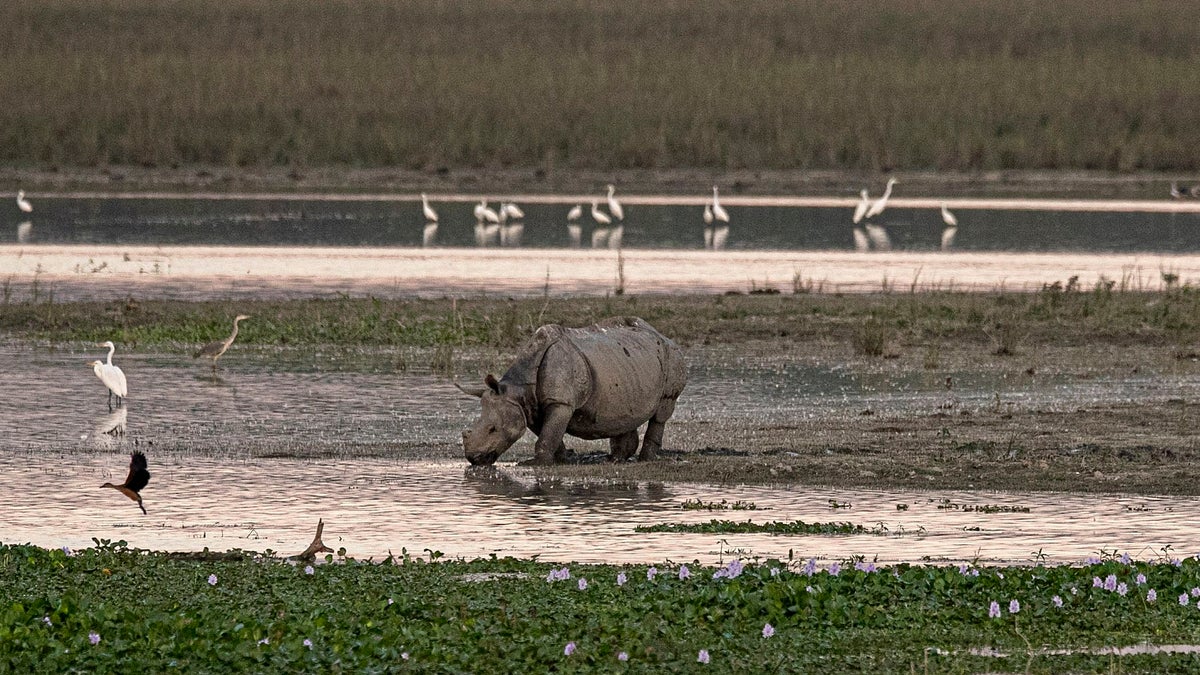11 Dec 2024

Tired Earth
By The Editorial Board

According to a 2020 report of the World Bank, the pandemic has aggravated and will continue to intensify the poverty of 176 million people worldwide. A white paper by FAO in 2020 highlights how high poverty rates will increase the dependence of vulnerable communities and households on natural resources. McNeely in his 2021 paper mentions how, globally, pandemics have also aroused the beliefs of susceptible households in countries with biodiversity-rich ecosystems resulting in land clearing, illegal logging and mining. Escobar’s study on Brazilian amazon highlights a 34% increase in forest clearing during the pandemic in 2020. Somerville in 2020 reported the illegal hunting of rhinoceros in Botswana because of the high demand for its horn to treat the Covid-19 virus in traditional Chinese medicine.
At home in India, though I have not come across a published study quantifying the impact of the pandemic on biodiversity, there are a few publications that highlight the negative impact on various ecological aspects. While talking to conservationists and communities, I have found that people had very little choice in most matters, their livelihoods stood severely affected, the mass exodus meant more fuelwood requirement and more bush meat hunting; reports of expansion of agricultural land in forests.
Among the firsts, was a cry from many conservationists to save bat colonies as people were scared that bat colonies around their homes were bringing corona/Covid-19 to their doors. Roosting trees were cut and bats were killed. Conservationists working on ground and frontline forest staff highlighted evidence of increased number of snare in forests.
Forest departments across the country have had a very tough time, given the spread of the virus, and its impact on both physical and mental health. Forest staff had to be in the field, away from families leading to many contracting the virus and few losing their lives
Further, many protected areas, especially tiger reserves lost precious revenue streams with tourism shut. This revenue supports on-ground activities critical for conservation.
A paper published in the journal Biological Conservation listed how conservation biologists adapted to education in the new format of academia and the world. The paper highlights the struggles of conservation labs at universities and the shutdown of research. They raised concerns over the stunted training and careers of young conservation scientists. Many raised concerns on funding drying up, given the diversion of funds to pandemic relief. All this led to a lacuna being formed during this period marked by a lack of research, assessment, and monitoring of biodiversity.
It might take some time and deeper studies to truly understand the far-reaching impact that the pandemic has had on biodiversity. However, it appears that it is more negative than positive in nature. Though biodiversity conservation in the long-term underpins good health and security, it was not considered as an ‘essential’ service during the pandemic and most conservation work carried out by conservationists and NGOs came to a screeching halt. This along with the public relaying instances of wildlife seen on streets around them and the conclusions they made thereof, of how “nature is healing” tells us about our misplaced understanding of nature.
Conservation demands monumental efforts and concerted action. More attention must be drawn to scientists and conservationists who have called for a recovery plan. The relaxation of environmental laws proposed and clearances granted to mega-projects need to be revisited. Even from the priority lens of human health, the one health approach demands conservation of biodiversity to address such public health issues.
This pandemic has brought forward the lack of data, especially quantitative data on the status of biodiversity across habitats and time. Biodiversity estimations for the country must move on and expand beyond tigers, elephants, and rhinoceros and charismatic species to encompass all parts of our ecosystems. Generating time series data on biodiversity, can inform robust action plans that can be drafted and implanted especially during a crisis. Further, cross-sectoral research on biodiversity and its linkages to human wellbeing needs to be carried out. More participation and support from the corporations is critical if negative impacts of events such as pandemics are to be minimized.
Our world acts like ‘one system’ and biodiversity is at the heart of running it. If this pandemic is not an eye-opener, I wonder what will be. The hope is that whenever there has been a crisis, humans have risen and conquered the challenge. This time too, we must see the merit and reason in biodiversity conservation and rise to the occasion.
Source : timesofindia.indiatimes.com
Comment